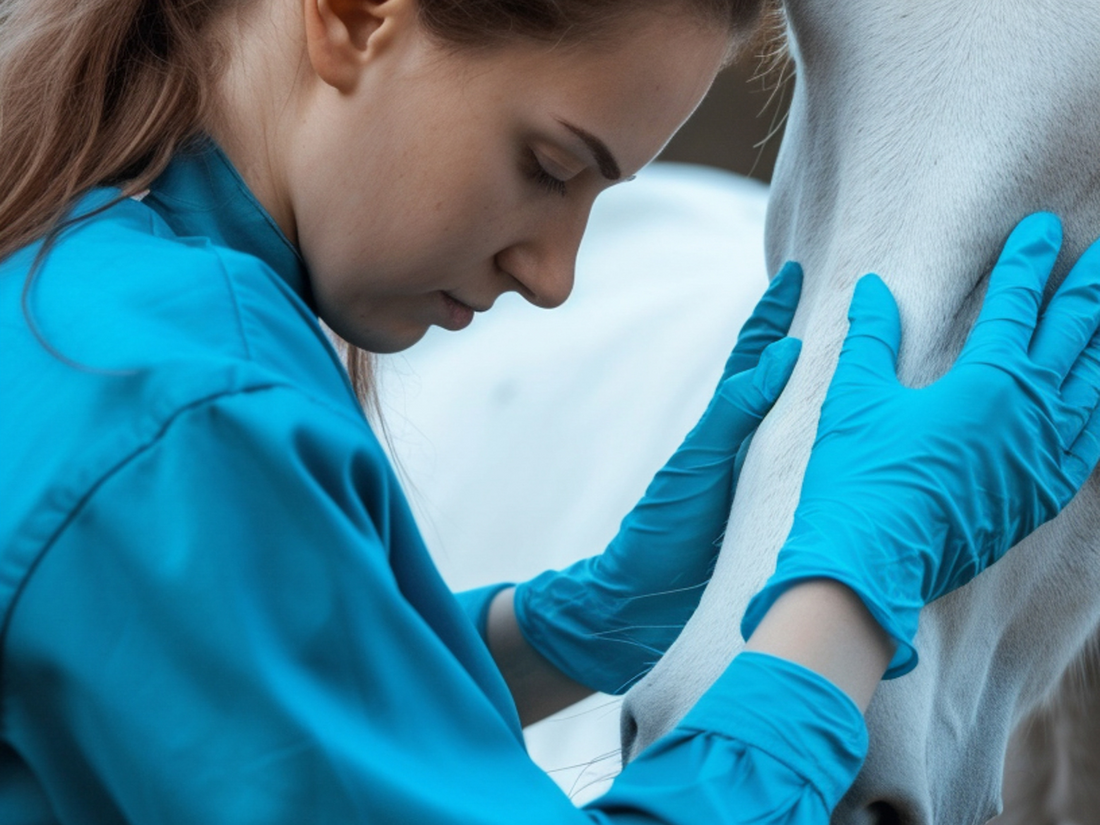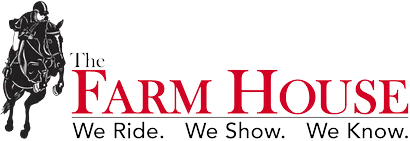
Horse First Aid Kit Essentials: What Every Equestrian Should Have on Hand
Michelle Drum“Plan for the best but prepare for the worst” may be an old adage, but it’s especially true for horse owners. Horses are wonderful, but they’re also prone to bumps, scrapes, and the occasional emergency. While you can purchase a premade equine first aid kit, building your own lets you tailor it to your horse’s unique needs, and often at a lower cost.
In this guide, we’ll walk you through exactly what to include in your horse’s first aid kit, where to store it, and when it’s time to use it or call the vet.
Why every horse owner needs a first aid kit
When your horse gets injured, the last thing you want is to dig through a cluttered tack room trying to find what you need—or worse, realize you're missing a critical item and have to dash to the store.
A well-stocked first aid kit can help you handle everything from bandaging a small scrape to stabilizing a serious injury while you wait for a vet. In an emergency, every second counts, and having your supplies organized and ready to go makes all the difference.
What to stock in your horse first aid kit
It’s tempting to pack your kit with everything under the sun, but keeping it focused and organized is key. Stick to the essentials and store backup items elsewhere but nearby. Below, you’ll find a practical checklist of what to include, grouped by category to make packing (and using) your kit simple and stress-free.
The basics: core supplies for any kit
Start with the essentials. These tools form the foundation of any reliable horse first aid kit.
- Digital thermometer: Helps you quickly check for fever or hypothermia. Know your horse’s baseline temperature (typically around 99–101°F).
- Stethoscope: Useful for listening to gut sounds, heart rate, and respiration, especially in suspected colic cases.
- Bandage scissors: For safely cutting bandages, gauze, or tape without harming your horse.
- Tweezers or forceps: Ideal for removing splinters, ticks, or debris from wounds.
- Gloves (non-latex): Always wear gloves when cleaning wounds or handling medication to protect yourself and prevent contamination.
- Flashlight or headlamp: Essential for nighttime emergencies or checking wounds in dark stalls or trailers.
- Vet wrap, gauze pads, and adhesive bandage tape: Your go-to materials for covering wounds and stabilizing injuries (we recommend Vetrap or Elastikon).
- Antiseptic solution (e.g., Betadine, Chlorhexidine): For cleaning cuts, scrapes, and other open wounds.
- Alcohol wipes or rubbing alcohol: Useful for disinfecting tools and cleaning the skin before applying treatments.
- Wound and injury care supplies
When your horse gets a cut, scrape, or swelling, having the right care items on hand can make all the difference.
- Wound spray or ointment: Promotes healing and protects against infection. Look for products labeled safe for equine use.
- Saline solution: A gentle, effective way to flush dirt and debris from wounds or eyes without irritating tissue.
- Hydrogel or silver-based wound dressings: These keep wounds moist and clean, speeding up recovery and minimizing scarring.
- Cold packs or ice boots: Ideal for managing swelling, inflammation, or soft tissue injuries, especially after hard workouts or minor sprains.
- Thermometer chart: Keep a laminated reference of normal temperature, pulse, and respiration (TPR) ranges for horses to spot abnormalities faster.
- Poultice and hoof packing materials: For drawing out abscesses or reducing inflammation in hooves and legs.
Hoof-specific tools and care
Since hoof problems can escalate quickly, be sure your kit includes tools to handle common issues.
- Hoof pick with brush: Essential for daily cleaning and checking for punctures or lodged debris.
- Hoof testers: Helpful for identifying sensitive or painful areas if you're experienced in their use.
- Farrier tools (shoe pullers and crease nail pullers): Only include if you’re trained or have farrier support nearby. These can be useful in emergencies like loose shoes.
- Hoof boots: Keep spare hoof boots on hand in case of a lost shoe.
- Duct tape and diapers: A barn hack for wrapping hooves that’s especially useful when treating abscesses or protecting poultices in muddy or wet conditions.
Medications and treatments to include
Always consult your veterinarian before administering any medications. Keep prescription meds in their original containers with clear labels.
- Electrolyte paste: Replaces lost minerals and helps prevent dehydration, especially in hot weather or during travel.
- UlcerGard: Helps prevent equine gastric ulcer syndrome (EGUS) in stressed horses.
- Bute or Banamine: Common prescription NSAIDs used to relieve pain, inflammation, or fever. A must-have with vet approval.
- Anti-diarrheal paste: Helps manage mild digestive upset while waiting for professional evaluation.
- Topical antibiotic cream: Protects wounds from infection and supports healing. Great for minor scrapes and abrasions.
- Sedatives or calming agents: Helpful for handling your horse in high-stress or painful situations—we recommend Perfect Prep EQ Extreme Calming Paste or a prescription like Dormosedan from your vet.
Bonus items for the extra-prepared
These items aren’t always in a basic kit, but they can be lifesavers in certain scenarios, especially when traveling or managing a high-needs horse.
- Copies of your horse’s medical records: Useful in emergencies, especially if someone else is caring for your horse or if you're away from home.
- Emergency contact list: Include your vet, farrier, barn manager, and backup contacts. Laminate a copy and keep it in the kit.
- Notebook and pen: Record symptoms, times, treatments, and vitals. Helpful for tracking progress and sharing info with your vet.
- Fly spray and sunscreen: Seasonal must-haves that help keep your horse comfortable during injury recovery (we recommend SWAT Fly Repellent Ointment).
- Spare halter and lead rope: Helpful if your horse needs restraint or if your usual gear breaks during an emergency.

Where to store your horse first aid kit
Keep your horse first aid kit in a central, easily accessible location, ideally in your barn or tack room. That way, you’ll have quick access when you need it most.
If you attend shows or haul your horse regularly, make it part of your horse show packing checklist. Better yet, consider keeping a second, fully stocked kit in your horse trailer so you're never caught without one on the road.
Be mindful of the environment you store your kit in; extreme heat or cold can affect the quality of certain supplies. If your barn or trailer isn’t climate-controlled, you may need to rotate temperature-sensitive items (like medications or gels) seasonally to prevent them from overheating or freezing.
What containers to use for your first aid kit
When it comes to choosing a container for your equine first aid kit, portability and organization are key. Look for something with compartments or dividers to help keep smaller items neatly stored and easy to find in a hurry.
Options include:
- A large fishing tackle box (great for layered storage)
- A toolbox or hardware organizer
- A grooming tote with interior pockets
-
A sturdy plastic bin with a secure, tight-sealing lid
Whatever you choose, make sure it’s waterproof, easy to clean, and airtight to keep your supplies protected, sterile, and ready when you need them most.
When to call the vet
Having a fully stocked first aid kit means you’re prepared to help your horse in a pinch, but it doesn’t replace professional veterinary care. Sometimes, a minor issue can be handled at home. Other times, immediate vet attention is critical.
Here are some situations where you should call your vet right away:
- Trouble breathing or signs of respiratory distress
- Persistent bleeding or deep wounds
- Suspected bone fractures or any injury to the eyes
- Signs of colic or acute abdominal pain
- Severe lameness–if your horse won’t bear weight, won’t stand, or seems unusually reluctant to move
- Foaling difficulties, especially if a mare has been straining for more than 30 minutes
- Severe diarrhea or prolonged, watery stool
- Fever of unknown origin, especially with signs like anxiety, restlessness, loss of appetite, or abnormal sweating
Learn more: 17 Signs and Symptoms of a Sick Horse
Pro tip: Eye injuries are always an emergency. If you notice squinting, swelling, cloudiness, or discharge from the eye, call your vet immediately. Eye issues can worsen quickly, and early treatment often means the difference between a full recovery and permanent damage.
Normal vital signs for horses
Knowing your horse’s baseline vitals helps you spot when something’s off. Here's what’s considered normal.
Adult horse
- Temperature: 99-101°F (37.2-38.3°C)
- Pulse: 28-44 beats per minute
- Respiration: 10-24 breaths per minute
- Mucous membranes: Moist, healthy pink color
Newborn foal
- Temperature: 99.5-102.1°F (37.5-38.9°C)
- Pulse: 80-100 BPM
- Respiration: 20-40 BPM
- Mucous membranes: Moist, healthy pink color
How to check your horse’s vitals
- Temperature: Use a digital thermometer rectally.
- Respiration: Watch the flank or nostrils. Count breaths for 15 seconds and multiply by 4.
- Pulse: Use your fingers to feel the facial artery or under the jaw. Count for 15 seconds, then multiply by 4.
- Hydration: Try the skin pinch test. Gently pinch the skin on the neck—if it doesn’t snap back quickly, your horse may be dehydrated.
Learn more: Horse Hydration 101: How Much Water Should Your Horse Drink in a Day
Keep a handy and well-stocked horse first aid kit
Keeping a handy and well-stocked horse first aid kit is the best way to ensure you have what you need when your horse needs medical care. Check your supplies periodically to make sure they’re in good working condition and are current. And remember—when in doubt, call your vet.
Prepare for the unexpected, and get equipped for every day
A first aid kit is just one part of being barn-ready. From breakaway halters to spare lead ropes, having reliable tack on hand helps you stay in control when emergencies strike.
Shop everyday tack and barn essentials →
You might also like:

1 comment
This is one of the most comprehensive lists for first aid that I have seen. Thank you so much for posting this and other articles with valuable information. :-)